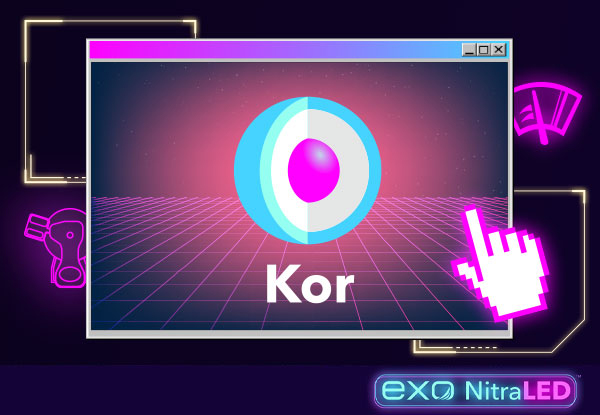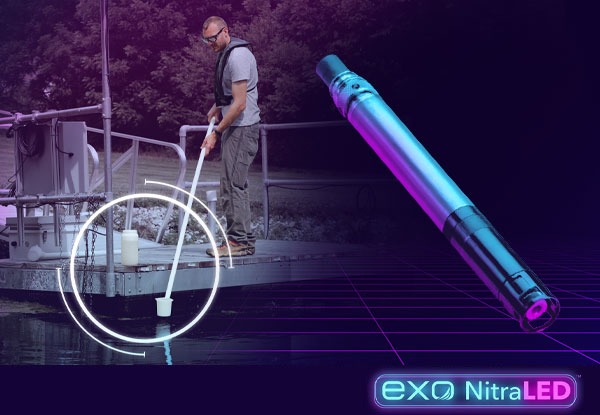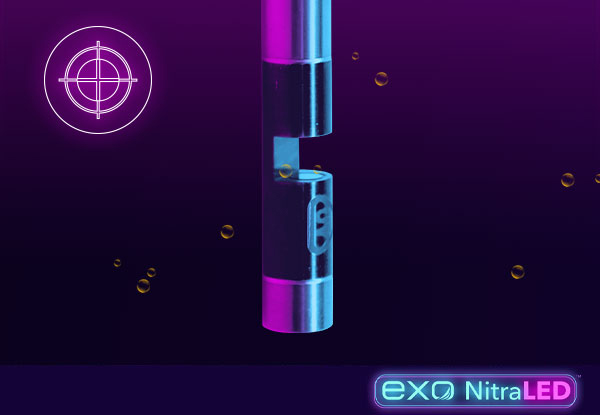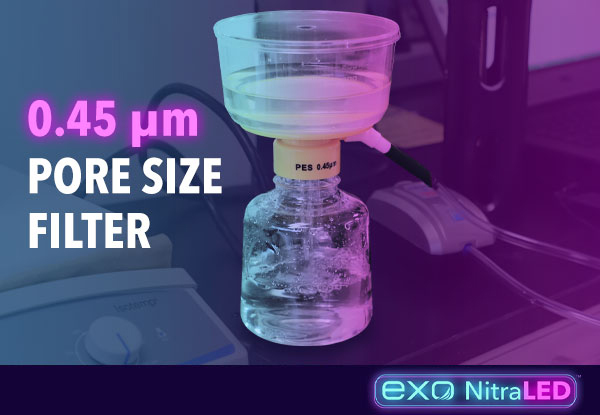EXO NitraLED: Top 4 Tips for Site Specific Corrections
The site specific correction is an additional adjustment that can be made in order to more accurately define the computations performed inside the sensor, tuning it to your particular water body. The EXO NitraLED UV nitrate sensor is able to adjust its calculations to account for different sediment and natural organic matter (NOM) types; additional information about that can be found in the Corrections for Turbidity and NOM technical document. Nitrate sensors from other manufacturers allow for similar corrections to be applied but typically these are applied in a factory setting whereas we allow you, the user, to perform these adjustments yourself.
The procedure is fairly simple but attention to detail is paramount. Below, I highlight the top four tips that we at YSI recommend.

1) Make Sure Your Software and Firmware are Updated
Before even starting the calibration in standards, make sure that the software package is updated on the computer that you are using and then verify that the most up-to-date firmware package is installed and loaded onto your sonde and sensors. Various issues will be seen if the version of software or firmware on your computer is too old, such as not being able to “see” the NitraLED sensor, not being able to change the wiper mode, and possibly not being able to deploy the sonde with nitrate data.
To prevent any issues with the EXO sonde, NitraLED sensor, and wiper brush, simply navigate to our software download page and download the most recent software and firmware packages. In addition to checking this page out now, we recommend that you take a look at it quarterly to see if we have any new releases.
The minimum requirements are as follows:
- KorEXO: 2.3.10
- EXO Sonde: 1.0.84
- NitraLED Sensor: 1.0.58
- Turbidity Sensor: 3.0.4
- Central Wiper: 3.0.11
- Handheld: 1.0.63

2) Nitrate Reading is Only as Accurate as External Source
In Step 1 of the site specific correction, I entered the nitrate reading from an external nitrate source because the sensor needs to know what it should be calibrated to. Turbidity and NOM type differences from what is programmed into the sensor as default coefficients will cause error in the sensor nitrate readings immediately, but the SSC procedure is intended to calibrate to site conditions, resulting in a more accurate nitrate analysis.
NitraLED has accuracy specifications that are based on calibration of the sensor in pure nitrate standards. When the sensor is submerged into an environmental sample, the accuracy of the sensor is unknown because we do not know how sediment and NOM are each going to affect the readings and what error they each bring to the table.
The accuracy of the sensor will also change based on the measurement source used for determining the nitrate value to calibrate to. There are several options for these external readings including EXO or ProDSS nitrate ion-selective electrode sensors, benchtop photometers, nitrate reduction colorimetry tests, and any Standard Method laboratory procedure. The more accurate the sensor/analysis that is chosen for the reading in this step, the less the accuracy of the NitraLED sensor will change.
As an example, the accuracy of an ISE may be +/-1 mg/L. This means that the accuracy of the NitraLED should be approximately +/-1.4 mg/L, plus any effects due to turbidity and NOM. However, if a Standard Method laboratory analysis is used, the error of the instrument used may be less than +/-0.1 mg/L, meaning that the NitraLED accuracy should be approximately +/-0.5 mg/L, plus any effects due to turbidity and NOM. As you can see, maximizing the external test accuracy will minimize the potential NitraLED reading error.

3) Watch for Bubbles
Steps 2-4 require the sensor to be submerged in either a raw or filtered sample in order to compute the turbidity and NOM coefficients inside the sensor. As seen in the video, I had my samples being continually stirred while I was performing this procedure at a rate slightly higher than the flow of my natural stream. This ensures that all of the sediment and NOM in my sample stays adequately mixed and suspended similarly to how it would be at my field site. One important thing to note: stirring can introduce bubbles.
Bubbles must be watched out for because they can scatter the light that is transmitted by both the NitraLED and turbidity sensors. I cannot stress the importance of continually observing your sensor faces for bubbles during this process enough because any additional light scattering will cause the NitraLED and turbidity sensors to read incorrectly. This will affect the computation of the coefficients that will be programmed into your sensor for your deployment, causing an increase in error.
There are a few things that you can see in the data that will help you visually determine if you need to check for bubbles again:
- If bubbles are accumulating on the face of the turbidity sensor, the turbidity values will appear to be slowly increasing over time
- If a bubble is already on the turbidity sensor face, the value may be higher than what is expected – especially noticeable in the filtered steps
- If bubbles are accumulating on the NitraLED sensor face, the LED absorbance values will tend to be more erratic as the sensor is attempting to stabilize
- If a bubble has either attached to or released from the NitraLED sensor, there may be large increases or decreases in the LED absorbance values
Personally, I like to look at my sensor faces every minute or so during the correction procedure to ensure that I don’t have even a single microbubble. If you do see bubbles, simply remove the sensors from the sample water and then place them in the water again. If they are persistent, try wiping the faces with a lint-free cloth and then place the sensors in the water again.
One way to prevent bubbles from attaching to the sensor faces as frequently as they might otherwise is to soak the NitraLED and turbidity sensors in outgassed DI or distilled water for anywhere from an hour before calibration to overnight.

4) Use the Correct Filter
Filtered sample water is called for in Steps 3 and 4 of the correction procedure and as mentioned, I used a vacuum pump and filtering flask to filter my raw sample water. I used a 0.45 µm pore size filter for this step, which is what you may already have in the lab for microbiology studies or sampling for dissolved metals.
The site specific correction procedure calls for the use of a 0.45 µm pore size filter to remove the majority of the sediment from the sample water, leaving relatively clear sample water for finalization of the turbidity coefficients and determination of the NOM coefficient. Ideally, the resulting turbidity should be less than 1 FNU. If the turbidity is not less than 1 FNU, it may simply take the sensor absorbance values a tad longer to stabilize.
If a larger pore diameter filter is used, additional sediment will pass through and can cause over-corrections to the data, causing nitrate to read lower. If a smaller pore diameter is used, additional sediment will be filtered out but some NOM species will be filtered out as well, leading to under-correction of data, causing nitrate to read higher.
All of the testing at YSI so far has been performed with a 0.45 µm filter and deployments have continually been successful using this filter pore size.
In addition to using the proper pore size, filter material also needs to be tested for possible contaminants. Before trusting a filter, verify that the filter does not introduce anything into the sample that would interfere with a measurement by running DI water through the filter and then processing that sample water in a spectrometer, looking for peaks near 235nm and 275nm. If there is a spike at either of those two wavelengths, there is likely some species being input to the water sample via the filter, and another filter type should be considered.
For additional details on the site specific correction procedure, please check out our Site Specific Correction Procedure technical note or contact our Technical Support team at info@ysi.com.
